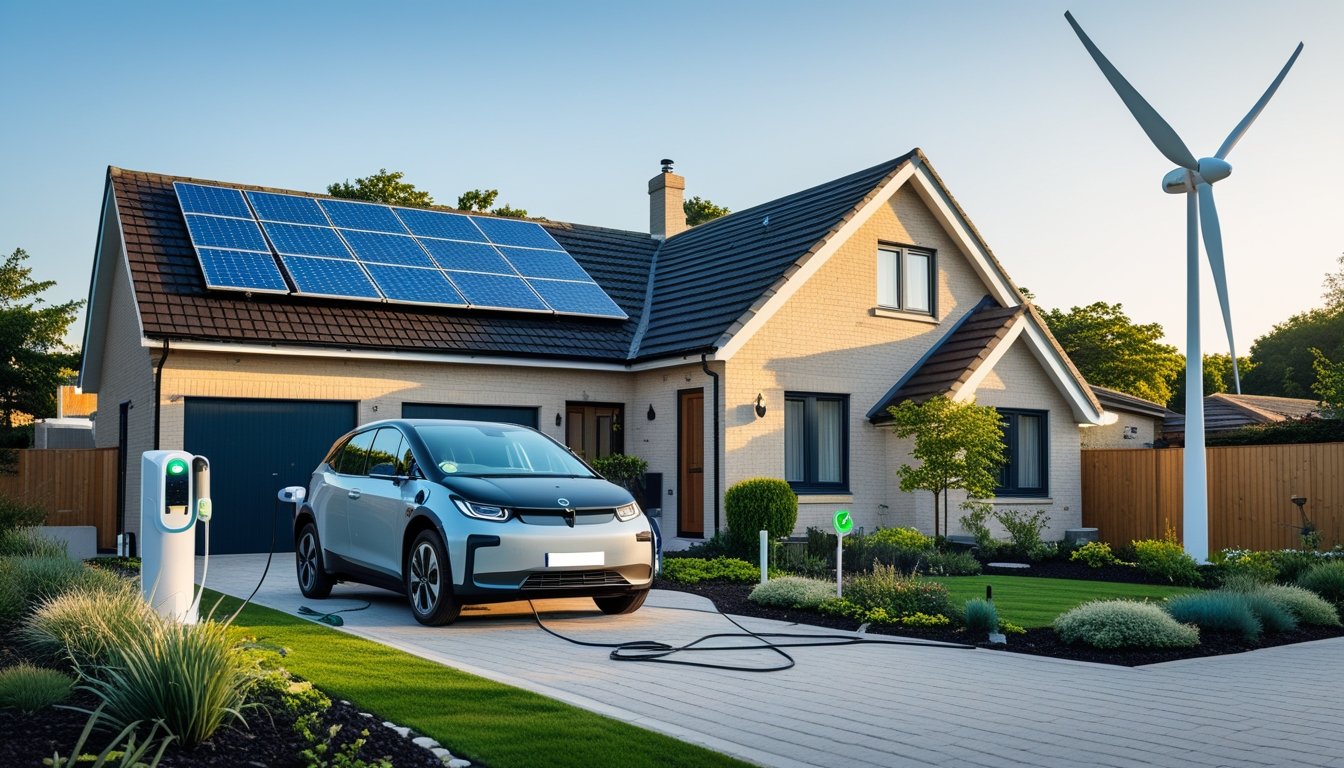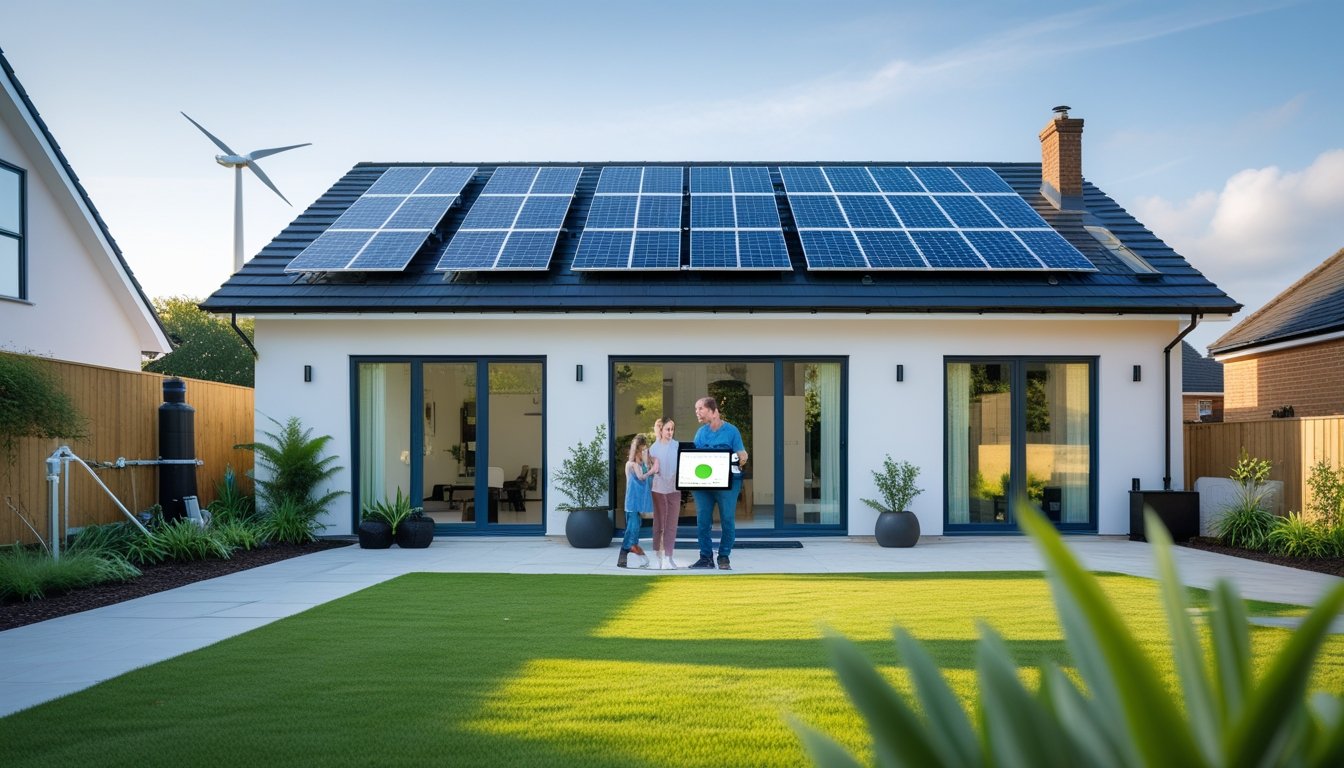Late updated: 27 Jun 2025 15:06
Written by: Eleanor Hartman
Sustainable Energy Alternatives For UK Homes: Efficient Solutions for the Future
Reducing our carbon footprint and enhancing sustainable living have become important priorities for many homeowners in the UK. As a result, the exploration of alternative energy sources is gaining momentum. Choosing the right renewable energy solutions can significantly lower not only your energy bills but also your household's greenhouse gas emissions.

In the UK, popular sustainable energy solutions include solar panels, wind turbines, and heat pumps. Solar panels harness energy from the sun, while wind turbines are particularly effective in rural areas with ample open space and consistent winds. Heat pumps, especially the air source and ground source variants, offer efficient heating solutions by extracting warmth from the environment even during colder months.
By making homes more sustainable through efficient energy systems and practices, we not only contribute to environmental conservation but also enhance the quality of life by creating more self-sufficient living spaces. This transition to renewable energy sources forms a key part of a larger strategy to address climate change while benefiting everyday life.
Key Takeaways
- Opt for solar panels or wind turbines for cost-effective energy.
- Heat pumps are an efficient heating solution in cooler climates.
- Sustainable energy enhances self-sufficiency and lowers emissions.
Key Sustainable Energy Alternatives for UK Homes
We explore several effective sustainable energy alternatives suitable for UK homes, highlighting their benefits and practical applications. These options include solar power technologies, efficient heat pumps, and wind and hydro solutions. Each offers unique advantages tailored to different housing and environmental conditions.
Solar Power Technologies
Solar power technologies are gaining traction across the UK as more homeowners seek renewable energy sources. The two main types are solar photovoltaic (PV) systems and solar thermal panels.
Solar PV panels convert sunlight directly into electricity, making them a popular choice for generating renewable energy. They are particularly effective on south-facing roofs with little shade. Many homes already use them to significantly reduce electricity bills.
Solar thermal systems, on the other hand, are designed for water heating. These systems use solar collectors to absorb sunlight, which is then used to heat water for domestic use. They can substantially cut down on energy costs related to water heating, especially during the sunny months.
Heat Pumps and Efficient Heating Options
Heat pumps offer an efficient alternative for home heating. They extract heat from the air, ground, or water outside and transfer it inside. Air source heat pumps are common; they are installed outside a home and work even in cold climates.
Ground source heat pumps transfer heat from the ground into buildings, offering higher efficiency. They generally require more space but offer consistent heating, making them suitable for larger properties.
We also have micro combined heat and power (CHP) systems, which generate electricity and useful heat simultaneously. This ensures efficient energy use, contributing to lower carbon emissions and energy costs.
Wind and Hydro Solutions
Wind and hydro solutions are viable for homes situated in suitable locations. Small-scale wind turbines can provide clean wind power, especially in rural areas with consistent wind patterns. They must have sufficient land and exposure to strong winds for optimal efficiency.
Hydropower, while less common for individual residences, remains an option for those near flowing water. Small hydropower systems can generate reliable, renewable energy but are site-specific and require careful planning and installation.
Both wind and hydro solutions contribute significantly to reducing reliance on traditional energy sources, promoting a sustainable household energy landscape.
Maximising Energy Efficiency and Sustainable Home Design

In the UK, enhancing our energy efficiency and fostering sustainable home designs can significantly reduce our carbon footprint. This involves using advanced insulation techniques, integrating smart technologies, and leveraging financial supports like grants and incentives.
Effective Insulation and Materials
Reducing our energy consumption begins with robust insulation and smart material choices. High-performance thermal insulation using organic materials such as straw and reclaimed timber can efficiently lower heating needs. Triple-glazed windows further minimise heat loss, crucial for an eco-friendly home.
Green roofs, another innovative option, provide excellent insulation while absorbing rainwater and reducing heat islands. Implementing these sustainable building techniques helps curb greenhouse gases and significantly lowers energy bills by decreasing dependence on fossil fuels for heating.
Smart Technology and Electricity Management
Incorporating smart technologies is vital for energy-efficient homes. Installing battery storage systems paired with solar panels allows us to use stored energy during peak times, reducing electricity bills. Smart thermostats automate heating, optimising consumption to match our daily routines, thus further cutting costs.
Electricity management systems monitor real-time energy use, offering insights to fine-tune appliance efficiency and reduce waste. This shift towards smart technology significantly slashes carbon emissions, crucial to achieving a sustainable future.
Regulations, Grants, and Incentives
Complying with building regulations is essential for maintaining efficient energy standards in our homes. The UK government supports homeowners in this ecosystem through various grants and incentives. These financial aids facilitate energy-efficient upgrades, such as insulation enhancements or solar panel installations.
Programmes like the Green Homes Grant encourage adopting sustainable designs and improving energy performance. By taking advantage of these schemes, we not only reduce energy bills but also contribute positively to the environment.
Frequently Asked Questions

In the realm of sustainable energy for UK homes, there are numerous queries related to cost-effective systems, solar power integration, and methods to achieve energy self-sufficiency. Here, we address these key topics to provide clear insights.
What are the most cost-effective renewable energy systems for domestic use in the UK?
There are several options available to homeowners seeking cost-effective renewable energy systems. Solar photovoltaic (PV) panels are popular, offering a straightforward way to generate electricity. In areas with strong winds, small domestic wind turbines can provide additional power. Ground and air source heat pumps offer efficient heating solutions for those focused on reducing heating costs.
How can UK homeowners incorporate solar power to reduce reliance on conventional energy?
Solar power can significantly decrease dependency on traditional energy sources. Installing solar PV panels on rooftops is a practical step. Battery storage systems can further enhance efficiency by storing excess energy for use during peak times or when sunlight isn't available. Such systems maximise solar investment and reduce energy bills.
What innovative methods are there to generate electricity in UK homes using renewable sources?
Innovation in renewable energy includes systems like micro combined heat and power (CHP) units, which generate electricity and useful heat simultaneously. Homeowners can explore integrating solar thermal panels that harness sunlight for water heating, complementing PV systems. Additionally, hybrid systems combining multiple technologies can optimise energy production, tailored to specific property needs.
What are the leading examples of sustainable energy installations for residential properties in the UK?
Examples include solar PV and thermal panels, heat pumps, and biomass boilers. These systems cater to both electricity and heating needs. Energy-efficient home designs or retrofits, such as improved insulation and smart energy management systems, complement these installations, enhancing overall energy sustainability.
How can a UK household transition to a self-sufficient energy supply using renewable technologies?
Achieving self-sufficiency involves installing a combination of renewable technologies. Solar panels, heat pumps, and possibly small-scale wind turbines create independent energy systems. Battery storage further supports this by maintaining a balance between generation and consumption. Smart meters and efficient appliances ensure optimal energy use.
What government incentives are available for UK homeowners to invest in renewable energy solutions?
The UK government provides several incentives for renewable energy installations. The Smart Export Guarantee (SEG) allows homeowners to receive payments for excess solar power exported to the grid. Additionally, grants and loans may be available through schemes like the Green Homes Grant, supporting energy efficiency improvements and renewable technology adoption.